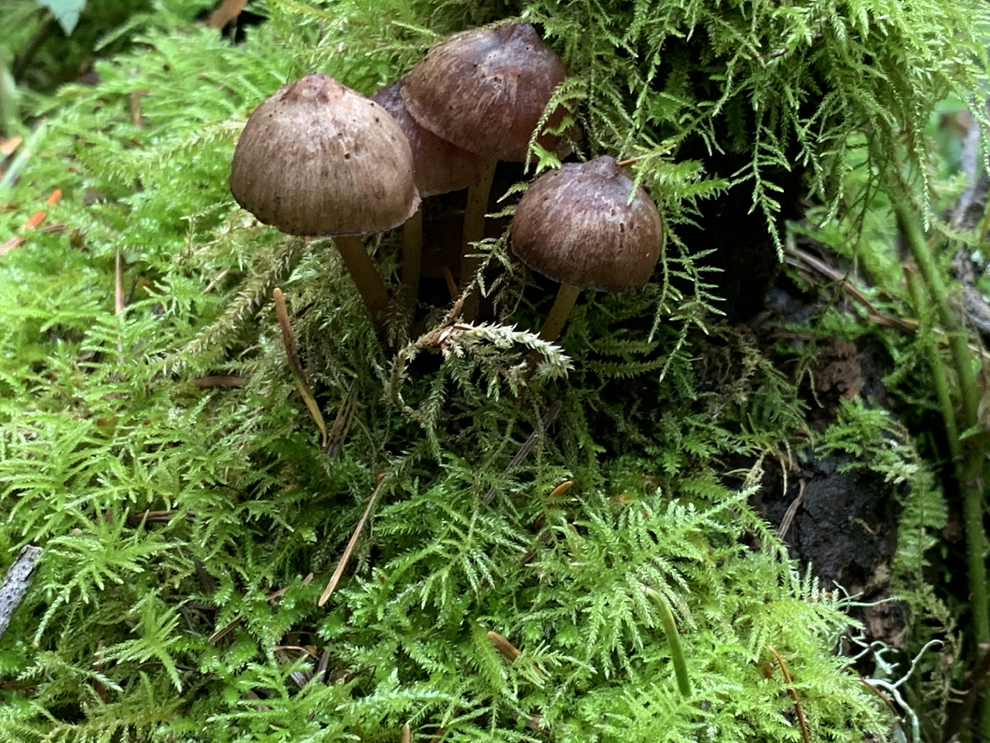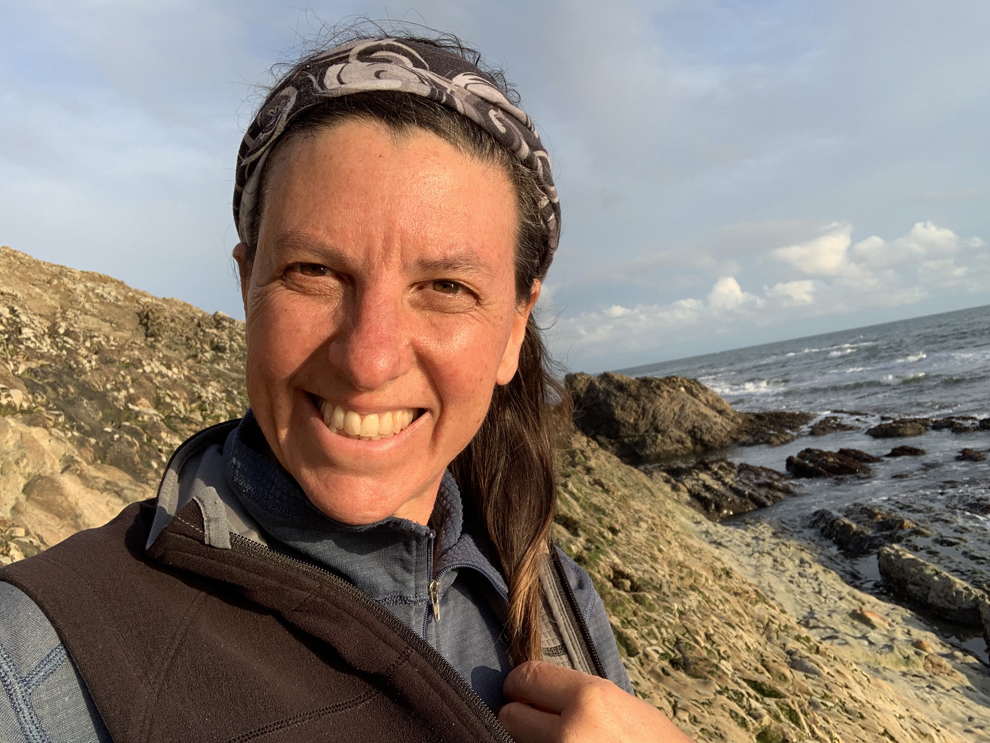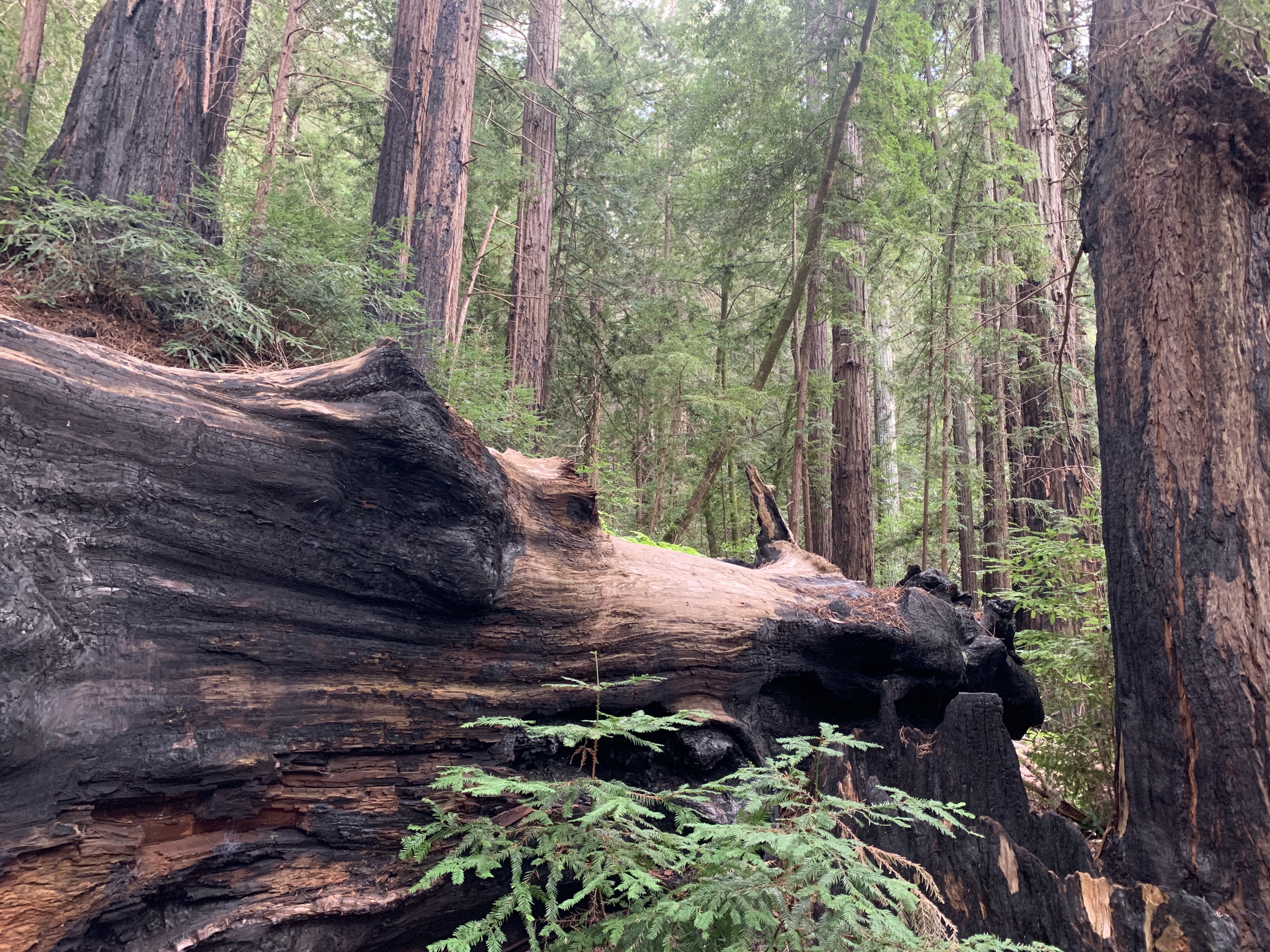In my recent NIW interview with Peter Seligmann (CEO of Nia Tero, Board Chair for Conservation International), I had an epiphany when I heard him speak about the difference in perspective on the forest by Indigenous Peoples of the Pacific Northwest versus a Westerner. The classic western frontiersman sees the trees in the forest; whereas the Indigenous Peoples see the forest in the trees… or as Thich Nhat Hanh (Vietnamese monk) would say, the cloud in the paper (Bodi Leaf). What does this mean? A frontiersman aims to hunt badgers and foxes for meat and skins to sell, pans for gold to become rich, surveys to lay (false) claim to a plot of land as if one can, and cuts down trees wherever he please. This self-action is extremely limited and false and misses to see the forest through the trees. Rather, in the collective worldview of the Indigenous Peoples –the forests are the trees and the trees are the forests. The biotic and the abiotic nature of nature are one. The animals and the environment commune. The health of one reflects the health of the other. I dwell in the forest, and the forest dwells in me. There is no separation. The energy, the air, and the water that breathes me, energizes me, inspires me, mentally charges me, activates me is the same for the tree and all other life that be.
The creation myth of the Skywoman Falling tells the story of the selfless collaboration of animals, the earth mud spread over the turtle’s back, and the dance of the sky woman in gratitude for the animal’s care of her—as giving birth to our Garden of Eden, as making earth and covering it with green life for an earth ecosystem-rich with biodiverse plants, animals, fungi to then adapt, evolve, and thrive. (Robin Wall Kimmerer, Braiding Sweetgrass) Why have these stories been hidden from popular western culture for so long? They hold the secret to our return to nature and nature’s return to our home (eikos).

The tree knows this truth and so even though it may maintain physical distance from the other trees in the forest (or so it appears above ground); when you turn the tree’s world upside down and look underground, you see the other (generally just as invested in biomass) side of the tree, the intricate and extensive system of roots that connect all the other tree shoots (also bushes, shrubs, grasses and wildflowers). They are connected. So, what does this mean? Like a brilliantly choreographed dance, the fine roots among trees in the forest serve as an information highway, an intelligent neural network in constant dialogue with the other trees (and all other living beings) in the forest, part of the collective trance.
Imagine a Lord of the Rings Ent-like underground silent communication.
Who needs water? Who has soil minerals to share? Who has recently been colonized by an insect infestation or overcome by a fungal disease? What else might the trees talk about? Who’s hosting that family fox den in their hollow this year? What about that spotted owl? Have you heard them hoot lately at night? Who among us is getting to close or thinking themselves better than most? Time to use our allelopathic (chemicals) ways to suppress their growth? Hey, anyone pitch a spruce beetle lately? I’ve had a few up my bark and smell the scouts in the air. Have courage. Stand strong.
In a healthy forest with strong tree and plant roots and communications, questions are answered, needs readily find resources, and survival rates among the community acting together to build resilience against a common threat, like a bark beetle outbreak. When I did my MS research on Dendroctonus.spp (deadly) bark beetles in mountain forests and tracked temporal/spatial patterns of infestation with the old ArcGIS tools, I determined scientifically (and spiritually) that these trees must communicate with one another (through pheromones) to warn the entire forest community of an impending bark beetle colonization attempt. Why is it important that the trees talk to one another and warn each other of such an attack? If the aim of the beetles is to colonize the trees and feed on their phloem to mature their larvae, then they are going for the dendroctonus kill; and the only way for the trees to fight back is to spread resources around, strengthen the forest stand as a unified whole, and coordinate a joint response. Trees intuitively know that bolstering the resilience of one is like bolstering the equivalence of none–in light of a colonization event or overcoming a virus (think COVID19) or withstanding a regular windstorm… So, in face of it all; what can we learn from the tree in regards to protecting our community? Survival simply can’t be about you and me… It’s got to be about future-proofing WE in unity.

True Symbiosis: Trees and Fungi Living as One
And speaking of unity consciousness as the key to survival-adaptation-evolution; mycorrihizae (the symbiotic relationship between fungi and plant-tree roots) have 100’s millions of years of history and experience on bolstering unity in the community, to share. Mycelium is the vegetative part (the underground net) of fungi and when it connects to tree and (tree) plant roots in the forest soil profile, the fungi forms a new bond with the tree (plant). As mycorrihizae (the fungi and the tree) flourish, mutually. Together, they engage in the most extraordinary fair trade of water and nutrients that the mycelia sources from the soil to gift the tree and of carbohydrates that the tree gifts back to the mycelia as food, not just for itself but for all the other living organisms tied to the mycelia throughout the underground forest.
Additional beneficiaries of this mycorrihizae exchange are the other plants and tree roots, who may at one time be somehow in need of increased nutrition or minerals or water to feed. But, be sure that when the tides turn and those same beneficiaries learn that another brother in the forest is in need; to their spare resources will they give to return the good deed. This is what it means to build a healthy ecology on mutual trust and a healthy economy on mutual reciprocity.
This gracious and inclusive communication and communion among trees and fungi and other living beings in the forest is not audible or understandable (yet) to most of us. But it is this natural intelligence (NI) of life functioning at its best—exacting, enacting, and exchanging resources where and when needed– that we as a species should learn to succeed. Could it be time to evolve our collective conscience with appreciation and valuation of the integrity of all life, and rise above the autonomous, anonymous (AI) high frequency trading of natural resources as commodities? In mycologist Paul Stamets’ world he calls the mycorrihazae trade, brokered mostly by mycelia (fungi) — a multi-dimensional exchange of nutrients among the AO—association of organisms. In his opinion, fungi lie at the center of nutrient exchange and growth among all life in a forest ecological community. So, stinky and strangely shaped as they may be, fungi in the forest are treated like nobility.

For the Love of Fungi –Connecting Trees with Trees
In the beginning when the earth was formed, mycelia were among the first living beings born. Mycelia broke rocks and fermented soils, which became the nursing ground for life to transform after every storm. In this earth-shaping way, mycelia made rich aerated soil from which emerged the first equisetum plants; flowering and seeding, and in turn, feeding foxes and bears and wild hares. Fungi also sporulated, allowing a great biodiverse ecosystem of ants and plants to populate the earth– and all life in advance to feed, procreate, and participate in the Earth Day dance. And did you know that during the PT (Permian-Tertiary) extinction (65 million years ago) when the night and day darkened; only those animals and plants who paired with the fungi in advance; survived to lead the New World in a new biological dance? True.
The more I learn about the magic of mushrooms, the more I respect and appreciate the fungi’s central role in forest nutrition, preventative health, and crisis recovery. I am convinced, that the Way of the fungi Tao is the secret to our survival post COVID-19. We have so much to learn from fungi, from the forest, from the forest of trees. Fungi teach us how to give, how to live, and how to let go. And, as keepers of the archetypal natural neural communication network, they can even teach us how to well communicate forward on our now nearly ubiquitous mobile devices. On that note, would you like to know mycelia’s secret strategies for connecting and networking the trees in the forest? Their strategy is simple, yet highly sophisticated and complex: unify, spread neural (netted, webbed, reinforced) communication highways widely (largest mycelia 300 miles in diameter), and create alternate routes for transferring nutrients in silent, underground, gracious, and (important) reciprocal ways. A super COVID-19 recovery response model, right?
Finally, given that fungi have co-evolved with different micro-organisms, like bacteria and viruses for literally 100’s millions of years; it makes sense that mushrooms may have already evolved antibodies to supercede this COVID-19 virus. Is anyone exploring what solutions nature can bring to the epidemiology floor? Fungi have been humanity’s anti-bacterial/anti-viral friend since the accidental discovery of penicillin by Andrew Fleming (on his windowsill) in 1928. Black plague, small pox, or the flu; didn’t fungi eliminate them, too? Isn’t COVID-19 in the flu family? Could mycologists now be helpful in finding a vaccine for our current global pandemic? Agarikon mushrooms have been shown to attack small pox and various flu viruses. As well, the Haida First Peoples of British Columbia used Agrikon to ward off diseases associated with evil spirits and ethereal (air-borne) microorganisms (viruses, bacteria). (Paul Stamets, MycoMedicinals ) Could Indigenous Peoples and mycologist knowledge be key to unlocking the COVID-19 antibody door?
P.S. And, for the love of fungi, watch Louie Schwartzberg’s Fantastic Fungi film. It’s a wonderfully orchestrated time-lapse view of the fungi forest floor and more. Divertiti!!!
Dedication to the 1 Trillion Trees Project
There are a little over 3 trillion trees on the planet. That’s about 400/person; but as I said earlier, its 50% less than we had before cities. How can we biodivert cities and return nature to the heart of our human civilization? What can we do to bring nature back to you? And, the first super-simple, super-easy, super-techno thing you can do is to shift your search engine from Google to Ecosia. Ecosia converts your clicks into virtual coin that they invest in forest restoration and tree planting. Check it out. They just launched and are on their way to planting now 90 million trees. (seems 1/second) Visit One Trillion Trees project
Dedication to the guardians of the forest, Nia Tero
We are all native to planet earth; and yet Indigenous Peoples are the guardians of our vital ecosystems. They embody nature’s wisdom in their rich cultures, intergenerational communities, and earth connections. They can show us how to recover our Human+Nature health and how to well celebrate our sustainable home. Visit Nia Tero
Dedication to the Mycelia, Fungi Perfecti
Mycelia are the naturally intelligent networks of our planet. As virtual shopping and online purchasing now explodes and spreads virally—almost as fervently as the corona virus itself; the environmental footprint of packaging likely also sky rockets. The good news is that the problem of unsustainable packaging must be addressed in the new circular economy-driven world we want to emerge into at the other end of CV19. I love all the online shopping one can do for mushroom health and soil composting and citizen science engagement to help re-vitalize bee populations on Fungi Perfecti; but where did the Life Box go???? I can only now find a site for Live Box sport’s and entertainment streaming.

Dr. Catherine Cunningham, PhD, Natural Intelligence Media is committed to awakening Natural Intelligence in the World. She produces multimedia content — books, films, and podcasts with her creative companions that aim to inspire everyone, everywhere to live a happy, healthy, naturally intelligent life.
Visit our Natural Intelligence Website HERE.
Participate in our “Combatting COVID-19 with Compassion” Heart Campaign HERE
Listen to my Naturally Intelligent by Design Podcast, featuring strategies from animals in our world to adapt to disruptive environmental change. HERE
Listen to our Natural Intelligence Worldwide Podcast HERE.


